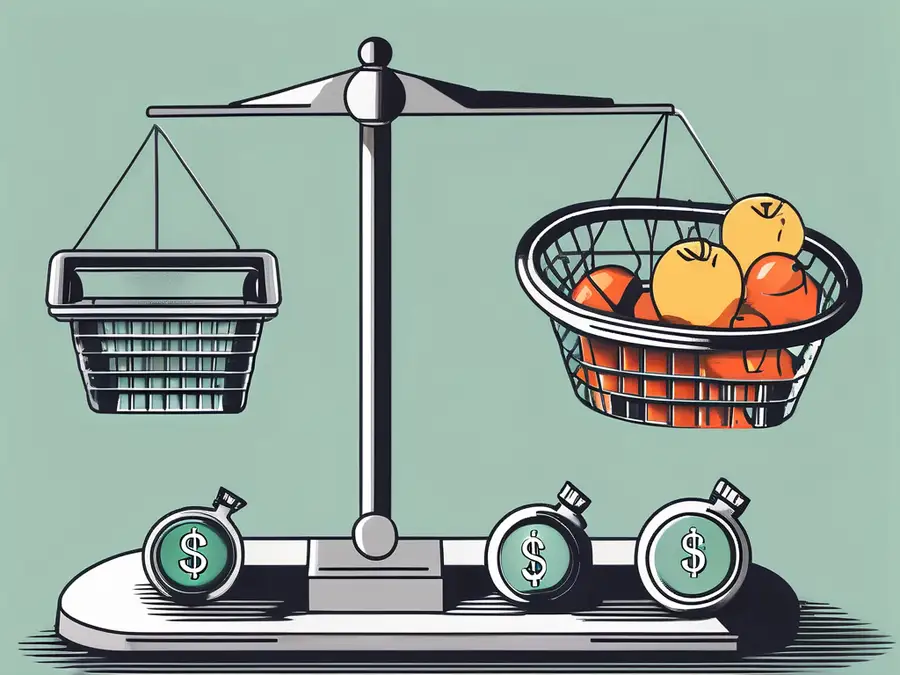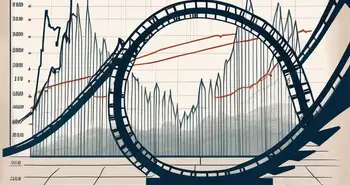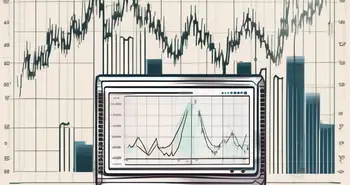The PCE Deflator: How It Tracks Consumer Spending and Inflation

In the realm of economic indicators, the Personal Consumption Expenditures (PCE) Deflator holds a significant position. As an expert in economics, I'm here to guide you through the ins and outs of this crucial metric. Together, we'll explore the definition of the PCE Deflator, its role in the economy, how it's calculated, its comparison with other economic indicators, and its impact on everyday life.
Defining the PCE Deflator
The Basics of the PCE Deflator
The PCE Deflator is a crucial economic metric utilized by the Federal Reserve to monitor and analyze inflation trends within the United States economy. This comprehensive index serves as a vital tool in assessing the fluctuations in prices of goods and services that are typically purchased by consumers. By evaluating the PCE Deflator, policymakers can gain valuable insights into the overall purchasing power of consumers and the general state of the economy.
Originating from the personal consumption expenditures data compiled by the Bureau of Economic Analysis (BEA), the PCE Deflator offers a comprehensive overview of the average price adjustments over a specified period. This data is instrumental in guiding monetary policy decisions and forecasting future economic conditions.
Key Components of the PCE Deflator
The PCE Deflator encompasses a diverse array of goods and services, ranging from essential necessities like food and housing to discretionary expenditures such as transportation, healthcare, and recreation. By encompassing such a broad spectrum of consumer spending, this index provides a nuanced understanding of inflationary pressures across various sectors of the economy.
One distinctive feature of the PCE Deflator is its ability to factor in changes not only in the prices but also in the quality and quantity of goods and services consumed. This nuanced approach sets it apart from traditional inflation measures, enabling a more accurate reflection of real-world consumer purchasing patterns and preferences.
The Role of the PCE Deflator in the Economy
The PCE Deflator and Inflation
Inflation is a critical factor in economic stability and growth. By monitoring changes in the PCE Deflator, policymakers can assess whether prices are rising or falling and make informed decisions regarding monetary policy. The Federal Reserve targets an annual inflation rate of around 2%, and the PCE Deflator helps them gauge whether this target is being met.
The Personal Consumption Expenditures (PCE) Deflator is a comprehensive measure of price changes in consumer goods and services. Unlike the Consumer Price Index (CPI), which focuses on a fixed basket of goods, the PCE Deflator accounts for changes in consumer behavior and purchasing patterns over time. This makes it a more dynamic and accurate indicator of inflationary pressures in the economy.
The PCE Deflator and Economic Policy
The PCE Deflator also plays a crucial role in shaping economic policies. By analyzing the data, policymakers can identify areas of potential concern, such as sectors experiencing rapid price increases. This allows them to implement policies that support economic stability and mitigate inflationary pressures.
Furthermore, the PCE Deflator is closely watched by market analysts and investors for insights into consumer spending trends. Changes in the PCE Deflator can signal shifts in consumer behavior, which can have ripple effects throughout the economy. For example, a sudden increase in the PCE Deflator may indicate growing consumer confidence and higher demand for goods and services, potentially leading to increased business investment and economic growth.
How the PCE Deflator is Calculated
Understanding the Calculation Process
The PCE Deflator is derived by comparing the current cost of a basket of goods and services to a base year's cost. By using a chain-weighted index formula, the BEA adjusts the weights assigned to each item in the basket to reflect changes in consumption patterns over time. This ensures that the PCE Deflator accurately represents consumer spending.
Moreover, it is important to note that the calculation of the PCE Deflator involves meticulous data collection and analysis. The Bureau of Economic Analysis (BEA) gathers information from various sources, such as retail outlets, service providers, and government agencies, to compile a comprehensive dataset that reflects the spending habits of consumers across different regions and income levels.
Factors Influencing the PCE Deflator
A variety of factors can influence the PCE Deflator. Changes in supply and demand, government policies, global economic conditions, and technological advancements all play their part. For example, an increase in oil prices due to geopolitical tensions can have a direct impact on the PCE Deflator, affecting the overall inflation rate.
Furthermore, consumer behavior and preferences also contribute to the fluctuations in the PCE Deflator. Shifts in buying patterns, such as a sudden surge in demand for a particular product or service, can lead to price changes that are reflected in the index. Additionally, advancements in technology that result in the introduction of new goods and services can pose challenges in accurately measuring inflation, as traditional methods may not fully capture the evolving consumption landscape.
The PCE Deflator vs Other Economic Indicators
Comparing the PCE Deflator and CPI
While both the PCE Deflator and the Consumer Price Index (CPI) measure inflation, there are key differences between them. The PCE Deflator takes into account changes in consumption patterns, while the CPI primarily focuses on fixed weights representing typical spending habits. Moreover, the CPI includes housing expenses, which the PCE Deflator excludes.
It is important to note that the Federal Reserve prefers the PCE Deflator over the CPI as its primary inflation gauge. The reason behind this preference lies in the fact that the PCE Deflator is based on actual consumer spending data, making it a more comprehensive measure of inflation. Additionally, the Federal Reserve believes that the PCE Deflator provides a more accurate reflection of inflationary pressures in the economy.
The PCE Deflator and GDP
When it comes to economic growth, the PCE Deflator is closely tied to the Gross Domestic Product (GDP). The PCE Deflator is used to adjust GDP figures for inflation, providing a more accurate representation of changes in output. By accounting for inflation, economists can differentiate between changes in real output and changes in prices.
Furthermore, the relationship between the PCE Deflator and GDP goes beyond just adjusting for inflation. The PCE Deflator also plays a crucial role in calculating real GDP, which is GDP adjusted for inflation. This real GDP figure helps policymakers and analysts understand the true growth rate of the economy, excluding the impact of price changes.
The Impact of the PCE Deflator on Everyday Life
The PCE Deflator and Personal Finance
The PCE Deflator directly affects our purchasing power and personal finances. As prices rise, the real value of our income diminishes. It's crucial to monitor the PCE Deflator to make informed decisions about savings, investments, and budgeting. By understanding inflation trends, individuals can align their financial strategies with the broader economic landscape.
Moreover, fluctuations in the PCE Deflator can have a ripple effect on various aspects of personal finance. For example, mortgage rates, which are influenced by inflation, can rise or fall based on PCE Deflator trends. This, in turn, impacts the housing market and individuals' decisions regarding buying or selling property. Additionally, the cost of borrowing money through loans or credit cards can be influenced by inflation rates derived from the PCE Deflator, shaping how individuals manage their debt.
The PCE Deflator and Business Decisions
Businesses also consider the PCE Deflator when making strategic decisions. Rising input costs due to inflation can impact profitability, while falling prices might indicate a downturn in demand. Understanding how the PCE Deflator affects consumer behavior allows businesses to adjust their pricing strategies and anticipate market trends.
Furthermore, the PCE Deflator plays a crucial role in shaping corporate financial planning and investment decisions. Companies analyze inflation trends derived from the PCE Deflator to forecast future costs and revenues accurately. This information guides businesses in setting realistic financial goals, optimizing cash flow management, and mitigating risks associated with economic uncertainty. By closely monitoring the PCE Deflator, organizations can adapt their operational strategies to maintain competitiveness in dynamic market conditions.
FAQ
What is the PCE Deflator?
The PCE Deflator is a measure of inflation that tracks the average change in prices for goods and services purchased by consumers. It is based on data collected by the Bureau of Economic Analysis and plays a vital role in economic policy-making.
How is the PCE Deflator calculated?
The PCE Deflator is calculated by comparing the current cost of a basket of goods and services to a base year's cost. The weights assigned to each item in the basket are adjusted over time to reflect changes in consumption patterns.
How does the PCE Deflator differ from other economic indicators?
The PCE Deflator differs from other economic indicators, such as CPI, in terms of the items included and the weight adjustments. While both measure inflation, the PCE Deflator considers changes in consumption patterns and excludes housing expenses.
What is the impact of the PCE Deflator on everyday life?
The PCE Deflator directly affects purchasing power and personal finances. Understanding inflation trends helps individuals make informed decisions regarding savings, investments, and budgeting. Businesses also consider the PCE Deflator when making pricing and strategic decisions.
Now that we have delved into the key aspects of the PCE Deflator, you have discovered its significance in the broader economic landscape. By staying informed about this vital indicator, you can navigate the complex world of personal finance and make well-informed decisions to secure a prosperous future. Remember, knowledge is power in the realm of economics.
As you navigate the economic landscape, understanding the PCE Deflator's influence on your financial decisions is crucial. Embrace the power of informed investing with Morpher, a revolutionary trading platform that harnesses blockchain technology to offer zero fees, infinite liquidity, and a unique trading experience across diverse asset classes. Whether you're adjusting your portfolio in response to inflationary trends or seeking new investment opportunities, Morpher empowers you with fractional investing, short selling without interest fees, and up to 10x leverage. Take control of your financial future today. Sign Up and Get Your Free Sign Up Bonus at Morpher.com, and transform the way you trade.

Disclaimer: All investments involve risk, and the past performance of a security, industry, sector, market, financial product, trading strategy, or individual’s trading does not guarantee future results or returns. Investors are fully responsible for any investment decisions they make. Such decisions should be based solely on an evaluation of their financial circumstances, investment objectives, risk tolerance, and liquidity needs. This post does not constitute investment advice.

Painless trading for everyone
Hundreds of markets all in one place - Apple, Bitcoin, Gold, Watches, NFTs, Sneakers and so much more.

Painless trading for everyone
Hundreds of markets all in one place - Apple, Bitcoin, Gold, Watches, NFTs, Sneakers and so much more.









